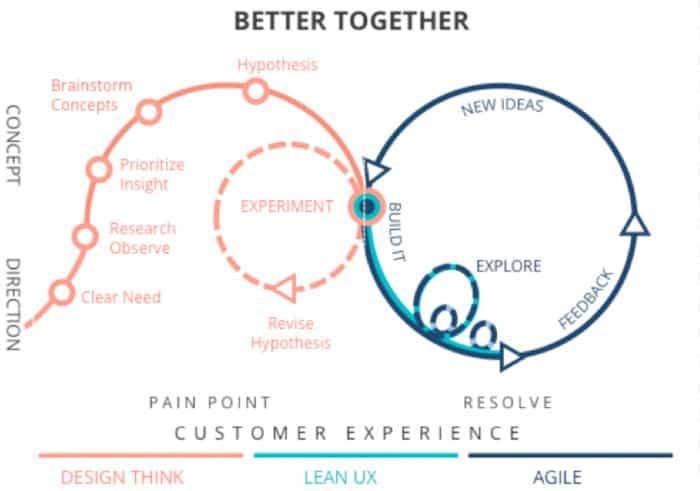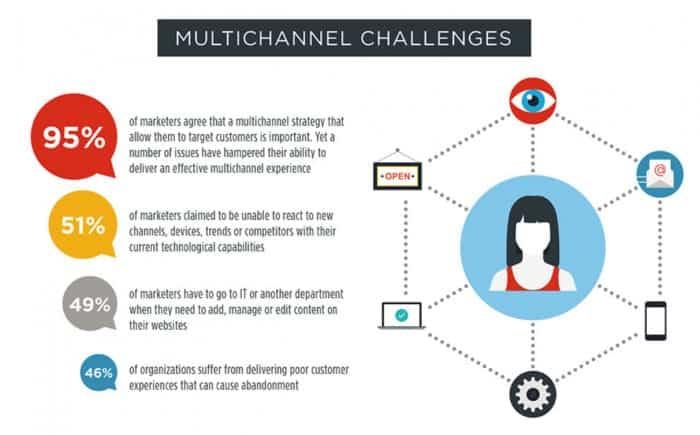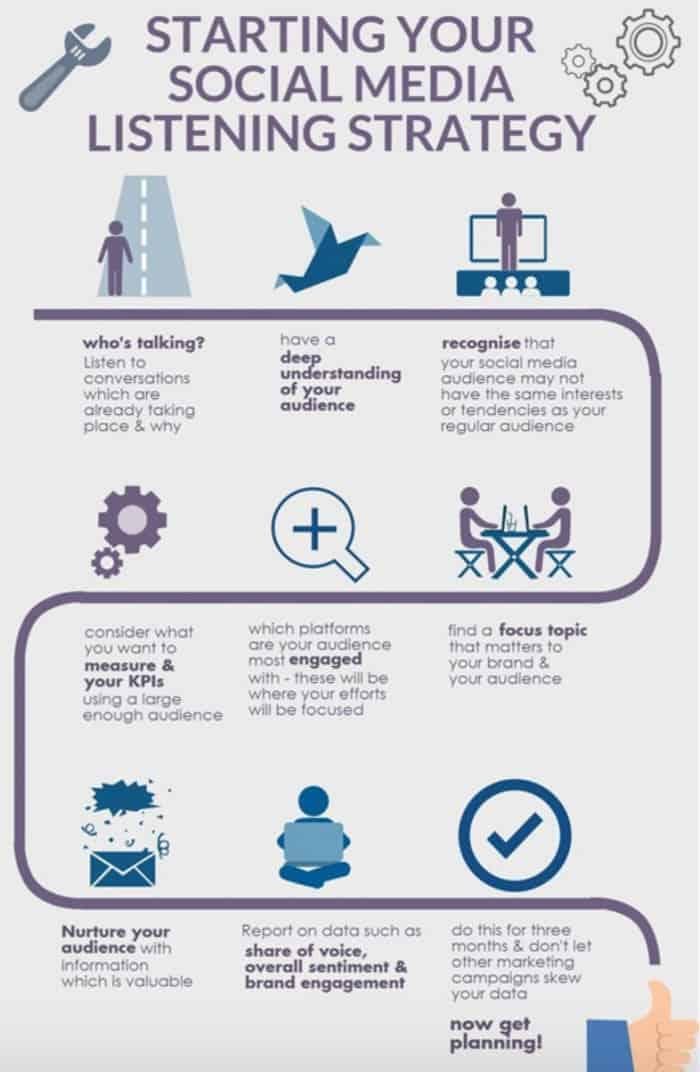Content marketing is a complex undertaking. From ideation to creation, it's easy to get caught up in the how and forget about taking action.
In fact, the very definition of content marketing makes it feel overwhelming,
"Content marketing is a form of marketing focused on creating, publishing, and distributing content such as news, video, white papers, e-books, infographics, email newsletters, case studies, podcasts, how-to guides, question and answer articles, photos, blogs, etc."
Holy moly! That's a lot of content. I think about my last 10 minutes before writing this article. It was filled with content:
- Look at Twitter, read an article.
- Hop over to Instagram, watch a Story.
- Take a peek at LinkedIn, peruse a feed full of business posts.
It's enough to leave your head spinning. And that's where most decide to hop off that crazy ride. You figure you've read enough, researched enough, and created enough to last a lifetime. Problem is, you're hearing crickets. See, content marketing has become way too complicated.
But it doesn't have to be.
If you'd rather spend your days focused on what matters most: building relationships, attracting the right people to your brand, and expanding opportunities instead of endlessly churning out content, it can be done.
So let's get you focused with a simple content marketing roadmap. In the latest Brand Authority Podcast, I share my DOMINATE formula. It will guide you through 8 elements in a successful content marketing plan.
Listen in!
Subscribe to Brand Authority Podcast on iTunes
Highlights from episode 26
D: Design an agile and strategic approach to content marketing
The days of creating a 12-month content marketing plan are long gone. The world moves and changes at a rapid pace and the only way to keep up is to stick to an agile or lean approach. With it you can create objectives, test your hypothesis, learn from daily initiatives, and adjust. The key is to:
- Do your research
- Create your content
- Test, test, test
- Track results
- Iterate
It allows you to push forward without getting bogged down in the details. You're able to make decisions based on data, move quickly to put content out that your audience will find valuable, and never waste time on tactics that aren't working.

O: Optimize Customer Experience
If you want content marketing to work for your business, spend time optimizing the customer experience. This means you've done the research we discussed above, you understand what matters most to your customers, and you're actively working to solve their problems. Don't know what those are?
Hop over to tools like BuzzSumo, SEMRush, and Google Analytics to see what your audience is already engaging with and sharing. That gives you great insight into:
- Their problem
- How your solution can help
Once you've identified their top problems, creating content becomes 100 times easier. For example, 3 of the biggest challenges many companies I work with are:
- Networking
- Attracting customers
- Generating sales
Take those challenges and determine what your solution and outcome would be for each. But remember: the solution needs to be life-changing, market-disruptive, and transformational. A cookie-cutter, me-too marketing approach isn't going to work.

M: Manage your marketing stack
Marketing can take your business from zero to success, but only if you pick the right tools. Start with an analysis. Look at what you're currently using and decide if they're still effective. Now consider what technology you need to succeed in the months ahead.
Next, identify how that technology, the tools, and the data flow from each aspect of your business. Ensure that the tools support business objectives without piling one more to-do onto your plate.
I: Integrate multi-channel marketing
People rarely make the decision to buy right away. Decisions take time. Guide your audience on their journey and help them take that next step. The idea behind multi-channel marketing is to capture your audience's attention on multiple different channels and create a streamlined and structured experience. Your goal is to treat each interaction in a customized and personalized way.

N: Never lose a lead
Think about your last interaction with a brand. You might have considered purchasing until a rude customer representative shrugged your question off as unimportant.
Those moments and a poor customer experience can be the deciding factor between a new company lead or a lead that moves on to the competition. With 54% of millennials, 50% Gen Xers, and 52% of baby boomers saying they've stopped doing business with a company due to a negative customer experience, you need a way to get in front of that.
Use social media to nurture relationships, then add each lead into a system. Once they're in your Customer Relationship Manager (CRM) of choice, woo them so you're turning that initial meeting into a real relationship.
A: Always be listening to stay ahead
Social listening is one of the most powerful ways to better understand your audience and then give them what they want. Moreover, by intentionally listening to your customers, you target your niche audience and attract potential leads. But don't confuse social listening with monitoring.
Monitoring refers to tracking your brand mentions, while social listening requires analysis and lets you see the bigger picture behind the conversation. Tools like Brand 24, SproutSocial, or Mention will help you stay active and involved. You can listen to your audience, hear what they're saying, and respond in real-time.

T: Tackle tracking, monitoring, and data
If you’re serious about content marketing, data-backed decisions are no longer an option. Yes, there's always room for experimentation, but if you want to move the needle in your business, you can't throw darts at a board.
Not taking advantage of data is like stumbling around in the dark, and who wants to do that? 🤪
As you move forward with your content plan, schedule time for the 4 Ds:
- Decide (what stays, what goes)
- Delete (remove anything unnecessary)
- Delegate (handoff non-essential tasks)
- Do (keep monitoring, adjusting, and implementing)
E: Exercise a healthy balance: maintenance, iteration, and managing growth
As you get comfortable with your processes and start to feel the momentum build, don't let shiny object syndrome derail your efforts. Focus on maintaining and managing that growth.
If you have a team, I suggest you make it a habit to debrief once a week. Talk about each channel, your content, and most of all... your audience. This will help you continue managing growth in a positive and productive way.
Final thoughts
If you want to set your business up for success, you need to create your marketing roadmap and stick to it. Following the DOMINATE formula on a daily basis will help you do that. Do you have any other tips or special formulas to add to your marketing roadmap and accelerate your business growth? Share them in the comments!
Subscribe to the Brand Authority podcast
Brands and resources mentioned
Radical Entrepreneur Facebook Group
Want to View on YouTube Instead?
About Rebekah Radice
Rebekah Radice, co-founder of BRIL.LA, has traded narcissism for purpose. When not driving growth, you'll find her tricking family into thinking she's Emeril Lagasse - likely covered in marinara. The spotlight was fun, but impact is better. These days she's using 20+ years of brand brilliance for good.
